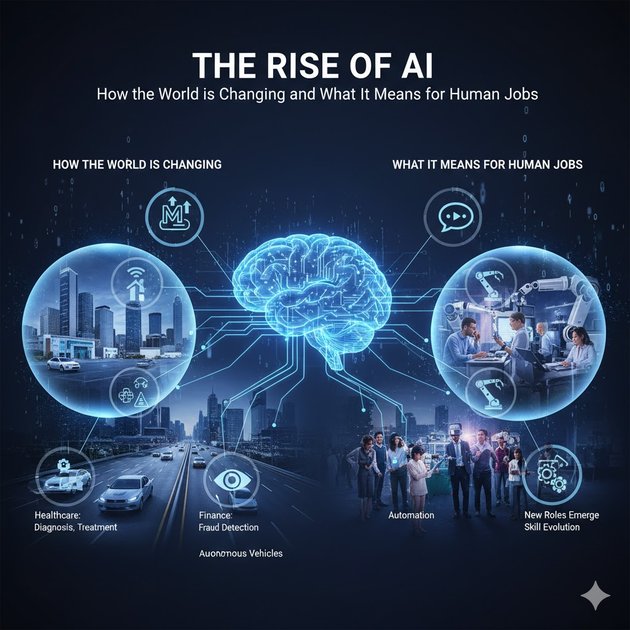17. Low-Code & No-Code Development
Building apps is no longer just for engineers. Platforms like Glide, Bubble, and Microsoft Power Apps are making it easy for anyone to build tools using drag-and-drop.
By 2026, over 75% of new apps are expected to be built using these low-code or no-code systems. Even OpenAI and Google AppSheet are helping users create AI tools without a single line of code.
16. AI-Crafted Experiences in Extended Reality
Extended reality (XR) is becoming more intelligent. In 2026, expect AI-driven VR and AR spaces that adapt in real time to users.
Nvidia and Meta are leading this space with virtual environments and avatars that respond, react, and improvise—blurring the line between the digital and real world.
15. Smart Infrastructure & IoT 2.0
With more than 30 billion IoT devices expected by 2026, cities are getting smarter. From traffic lights adjusting to congestion to smart poles in South Korea that monitor air and charge phones, the next wave of IoT is fully automated and data-driven.
14. Privacy-First AI & Local Processing
AI is going offline. Thanks to chips like Apple’s M4, Intel’s Meteor Lake, and Meta’s Llama 3, data can be processed locally—keeping it private and fast.
With strict data laws like GDPR and CCPA, local AI processing is becoming the new standard for privacy.
13. Workflow Automation at Scale
Companies are using tools like ServiceNow, UiPath, and Zapier to automate entire workflows—from hiring to billing.
Large firms report up to 65% fewer repetitive tasks thanks to automation, and AI is now coordinating humans and robots in real-time operations.
12. AI-Powered Robotics in Retail & Logistics
Robots are no longer sci-fi. Amazon uses Agility Robotics’ Digit for warehouse work, while Walmart deploys autonomous shelf scanners.
Even food delivery bots like Starship are mapping streets on their own, proving that AI-driven logistics is here to stay.
11. AI-Native Operating Systems
AI is now built into operating systems.
Microsoft’s Copilot in Windows 11 and Apple’s neural engines in macOS and iOS are turning computers into true AI partners—summarizing files, rewriting emails, and generating images directly from your desktop.
10. Smarter Wearables
Wearables are becoming 24/7 health companions.
Devices like Oura, Whoop, and Movano now track everything from stress to blood sugar—without needles. Soon, your ring or watch could predict illness before symptoms appear.
9. Quantum Computing Nears Reality
Quantum computing is moving from theory to application.
IBM, Google, and IonQ are developing chips with over 1,000 qubits, capable of simulating molecules and optimizing supply chains faster than any classical computer.
8. AR Glasses Replace Screens
Say goodbye to phone screens.
By 2026, AR glasses from Apple, Meta, and Samsung will display live captions, navigation arrows, and even real-time translations right in your field of vision—powered by AI that predicts what you need before you ask.
7. Personalized AI in Healthcare
AI is revolutionizing medicine.
Google DeepMind can detect 21 diseases from eye scans, while hospitals use AI to predict conditions like sepsis before symptoms appear.
Soon, treatment plans will be customized based on your unique genetic makeup.
6. Edge AI Chips Everywhere
AI chips are becoming standard in every device.
Apple’s A17 Pro, Qualcomm’s X Elite, and Intel’s Meteor Lake make AI tasks like translation and image editing happen instantly, without cloud support—turning every device into its own smart assistant.
5. AI-Powered Home Assistants
Home robots are evolving beyond speakers.
Amazon’s Astro is already patrolling homes, while Apple is reportedly working on a FaceTime-following robot.
In Asia, humanoid showroom assistants are greeting customers and answering questions.
4. Humanoid Robots Go Commercial
Humanoid robots are entering factories and offices.
Figure AI partnered with BMW to deploy Figure 01 in manufacturing, while Tesla’s Optimus performs real factory tasks.
By 2026, these robots could cost less than a small car—making human-shaped helpers common in workplaces.
3. AI Agents That Work for You
AI is moving from conversation to action.
Tools like Devin, AutoGPT, and Cognition Labs’ AI engineers can now plan, code, debug, and even deploy websites automatically.
Soon, you’ll delegate work to an AI assistant that completes full tasks start to finish.
2. Generative AI Becomes Default
By 2026, most digital content—text, audio, video—will be AI-generated or AI-enhanced.
OpenAI GPT-5, Google Gemini Ultra, and Anthropic Claude are leading this new creative revolution.
From voice cloning (11Labs) to AI video editing (Runway ML), creative production is forever changed.
1. Brain-Computer Interfaces
The most groundbreaking innovation—BCIs (Brain-Computer Interfaces)—is finally real.
In 2024, Neuralink implanted its first chip in a human, enabling them to control a computer with their thoughts.
Other companies like Synchron are helping stroke patients regain movement and communication, signaling a future where the mind directly connects with machines.
These 17 trends aren’t predictions—they’re unfolding right now.
From AI-powered cities to brain-controlled computers, 2026 is set to redefine the boundaries of technology and humanity.




